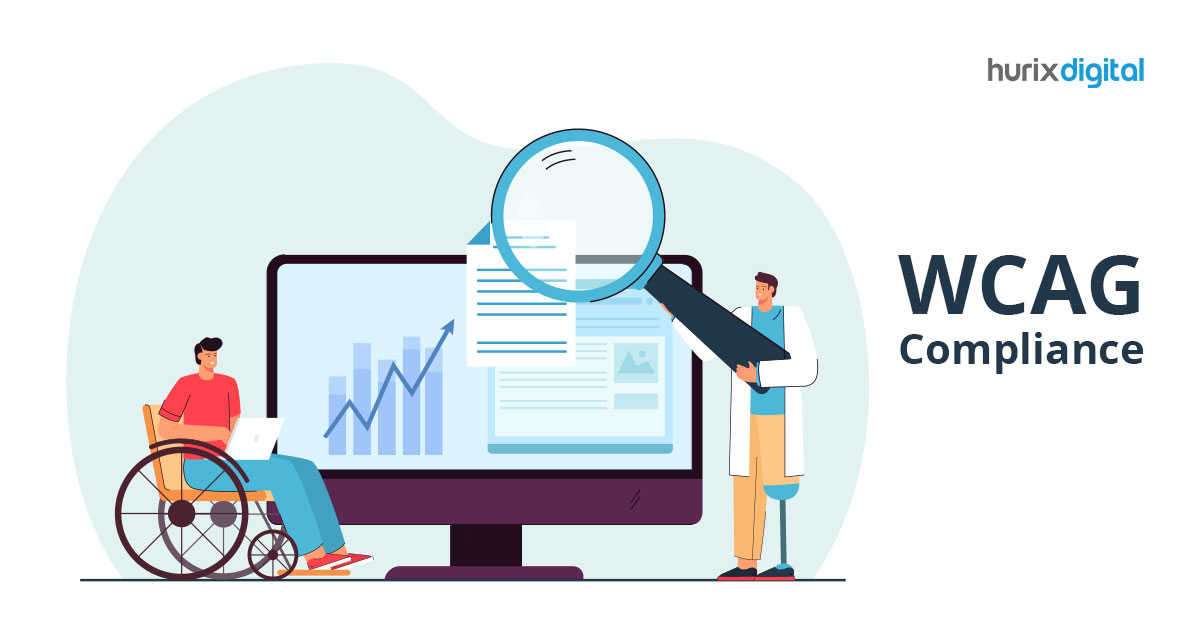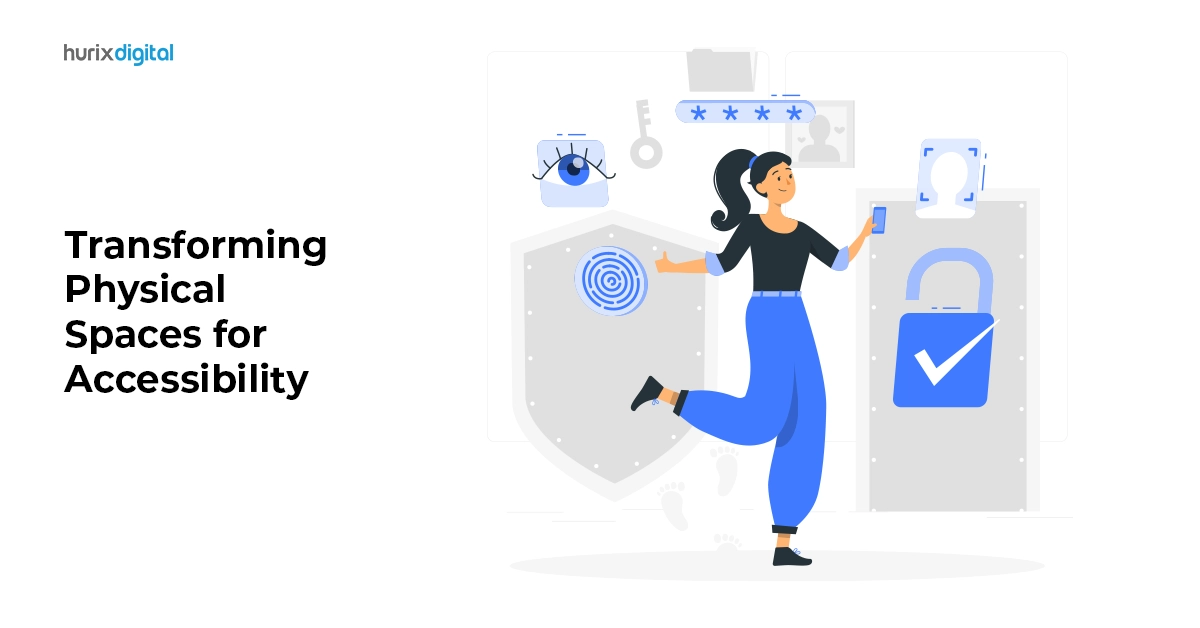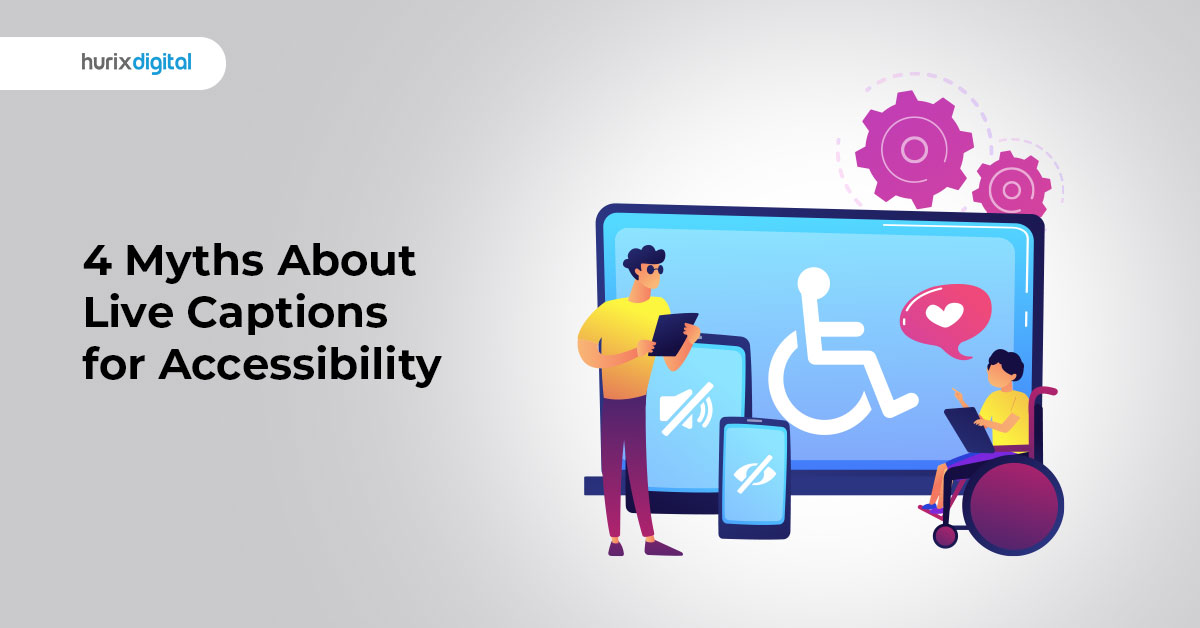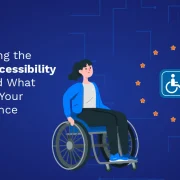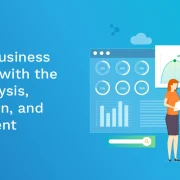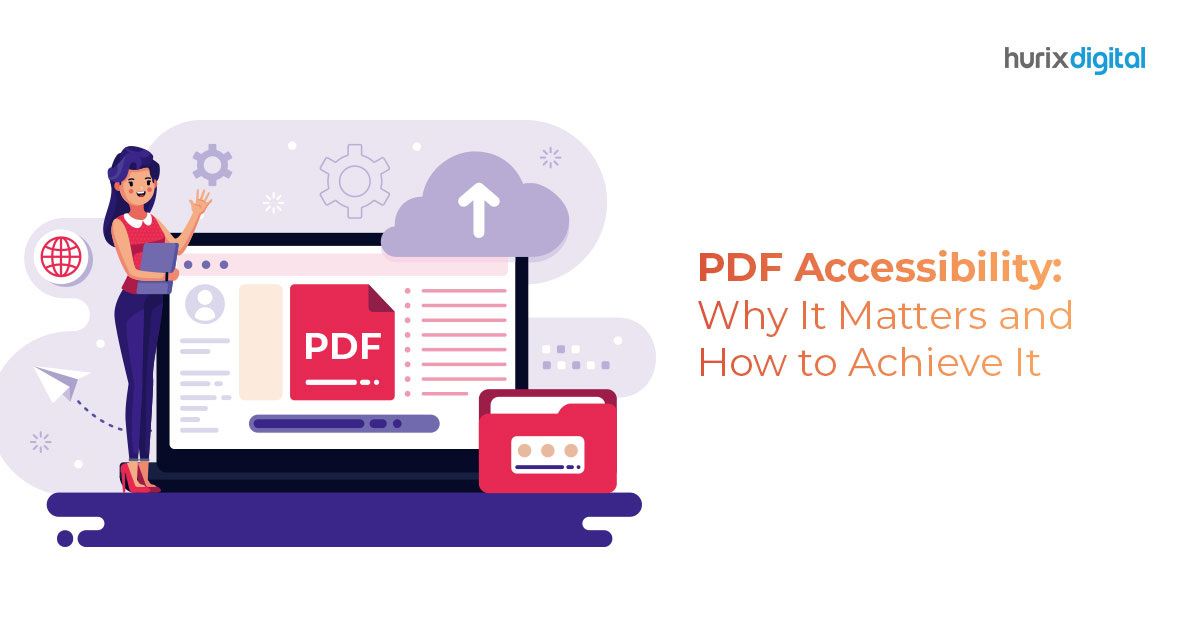
PDF Accessibility: Why It Matters and How to Achieve It
PDF documents have become one of the most popular formats for digitizing print material. This is because they are easy to share and maintain their original formatting across devices. However, ensuring that these documents are accessible to everyone, including those with disabilities, is crucial. This is where the concept of accessible PDFs comes in.
Making PDFs accessible involves ensuring that the document or form is properly tagged and well-structured. This allows people with disabilities to use assistive technology, such as screen readers, to access the information in the document. It is important to note that just like websites and mobile applications, PDF documents are also subject to accessibility guidelines such as WCAG 2.0 & WCAG 2.1 AA standards.
Hurix accessibility solutions for remediation and testing services ensure that your documents conform to these accessibility standards and guidelines. Our team of accessibility experts use assistive technology, work with the WCAG 2.0 & WCAG 2.1 and – PDF Techniques & PDF U/A (PDF) standard to remediate a fully accessible document that meets ADA, AODA & Section 508 accessibility standards and guidelines. We are providing pdf accessibility services to clients in the UK, USA, and across the Globe.
At Hurix, we follow a comprehensive workflow to ensure that your PDF documents are accessible and comply with accessibility standards such as WCAG 2.0 & 2.1, Section 508, ADA, and AODA. Our PDF accessibility workflow includes the following five steps:
- Evaluation: The first step in our workflow is to evaluate the accessibility of the PDF document. We use Adobe Acrobat Pro DC and other industry-standard tools to evaluate the document’s accessibility level. Our experts review the document for structure, tags, and other accessibility elements to determine its compliance with accessibility standards.
- Tagging: After evaluation, our accessibility experts tag the document to ensure that it is properly structured and accessible to screen readers. We use appropriate tags for headings, paragraphs, lists, tables, and other elements to ensure that the document’s content is properly structured.
- Remediation: In the remediation stage, we address any accessibility issues identified during the evaluation stage. This may include adding missing tags, adjusting the reading order, and other fixes to ensure that the document is fully accessible.
- Alternative Text: We also provide image descriptions to images, graphs, and pictures in your document. This helps people who use screen readers to understand the visual content of the document.
- Quality Check: PDF accessibility quality checking is an important part of ensuring that PDF documents are fully accessible to people with disabilities. At Hurix, we follow a comprehensive quality checking process to ensure that the PDF documents we create are accessible and meet industry standards.
Our PDF accessibility quality checking process includes the following steps:
- Manual Review: Our accessibility experts conduct a manual review of the document to ensure that it is properly tagged and structured. This involves reviewing the document’s headings, lists, tables, and other elements to ensure that they are properly tagged and accessible.
- Automated Checks: We use industry-standard tools such as Adobe Acrobat Pro DC (PDF accessibility software) to perform automated checks on the document. This helps us identify any accessibility issues that may have been missed during the manual review.
- Alt Text Checks: Our team checks the alternative text (alt text) for images, charts, and graphs in the document to ensure that they are properly described. This helps people who use screen readers to understand the visual content of the document.
- Color Contrast Checks: We check the color contrast of the document to ensure that it meets accessibility guidelines. This helps people with visual impairments to read and understand the content of the document.
- Navigation Checks: We check the document’s navigation to ensure that it is easy to use and accessible to people with disabilities. This involves checking the document’s reading order, bookmarks, and other elements to ensure that they are properly structured.
- Assistive Technology Checks: Our team uses a variety of assistive technologies such as screen readers and magnifiers to test the document’s accessibility. This helps us identify any issues that may have been missed during the manual and automated checks.
- User Testing: We conduct user testing with people who have disabilities to ensure that the document is fully accessible and easy to use. This helps us identify any issues that may have been missed during the previous steps.
- Delivery: Finally, we deliver the fully accessible PDF document to the client, along with a detailed accessibility report.
At Hurix, we are committed to delivering high-quality, accessible PDF documents that meet industry standards and guidelines. We have a team of experienced accessibility experts who work with the latest accessibility standards and guidelines to ensure that your PDF documents are fully accessible. Our PDF accessibility quality checking process is designed to ensure that every document we create is fully accessible and meets the needs of people with disabilities.

Vice President – Content Transformation at HurixDigital, based in Chennai. With nearly 20 years in digital content, he leads large-scale transformation and accessibility initiatives. A frequent presenter (e.g., London Book Fair 2025), Gokulnath drives AI-powered publishing solutions and inclusive content strategies for global clients

